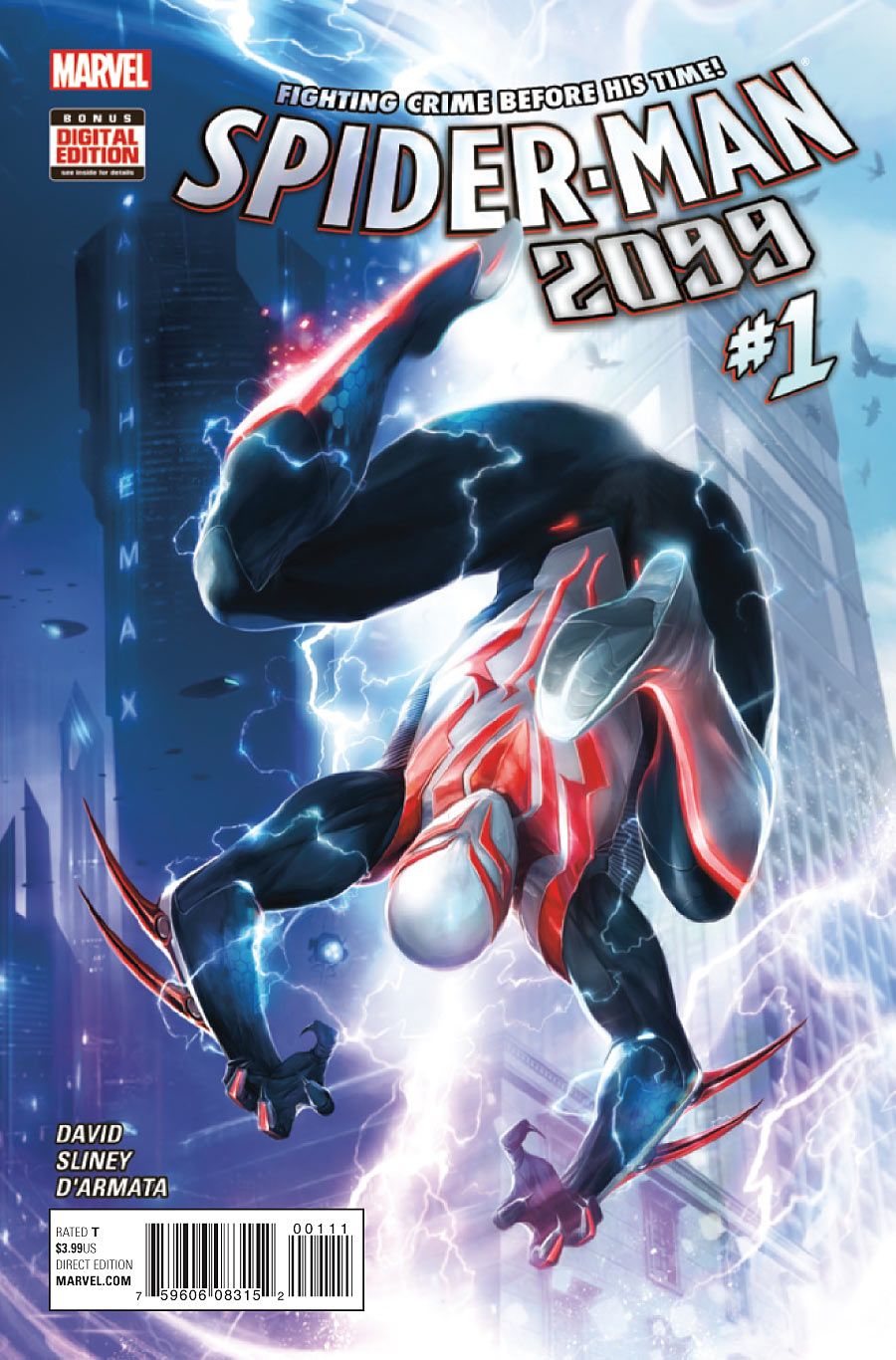Rather than lock readers in with a whirlwind introduction to the world of Spider-Man 2099, writer Peter David decides to go for the slow burn, using all of "Spider-Man 2099" #1 to tell the story of Miguel O'Hara's modern day existence in the post-"Secret Wars" Marvel Universe. Will Sliney draws the issue and, despite colorist Frank D'Armata clothing O'Hara in a familiar red and blue scheme throughout the issue, never quite nails the true fluidity of the Spidey of tomorrow.
As this is the start of a bold new era allegedly featuring 2099's Spider-Man "fighting crime before his time," those expecting some swinging, slinging or fisticuffs will be sorely disappointed. David tells the tale of a smitten O'Hara, established as an executive at Parker Industries, but he fails to give readers a real hook to catch. The final scene brings about character-changing devastation, but readers are more likely to find themselves pitying rather than liking O'Hara at that point. As a matter of fact, O'Hara is only marginally involved in the book's most entertaining scene.
Sliney's art is sleek and clean throughout "Spider-Man 2099" #1, but his figures need to loosen up a bit. Every moment has picture-perfect characters and finely detailed drawings. Some of those choices come through more as studio shots of characters holding poses for their big shoot rather than fluidly coursing through the panels. Sliney's storytelling is fine and occasionally brilliant, but there are a couple spots where he chooses the snazzy pose over the complete story, such as when Miguel stops a pair of would-be attackers. It's a tiny nit to pick, sure, but -- in a story with a costumed hero -- that little bit makes a difference.
The finale sets up a dynamic second issue, but this first issue lacks the pizzazz a debut needs to grab readers' attention and lock it in. "Spider-Man 2099" #1 gives the futuristic wallcrawler a vague threat to face down, a cliched entry point into a new life and an uninspiring introduction. This feels less like a #1 and more in line with something you'd see for a #0 or an anthology appearance. David and Sliney have their work cut out for them to hook readers in the second issue, but second impressions don't usually carry the same weight.

